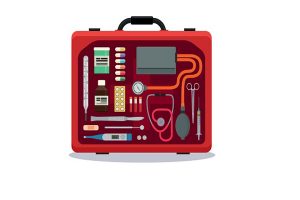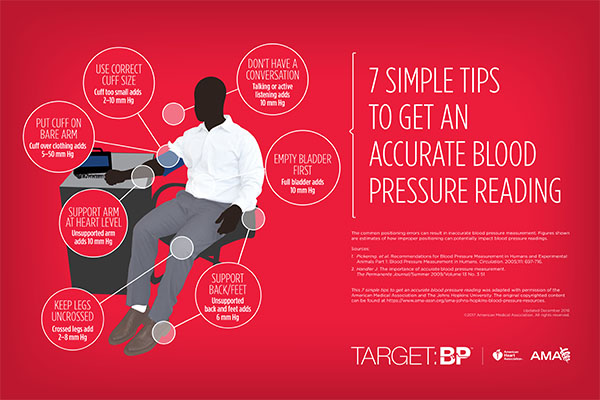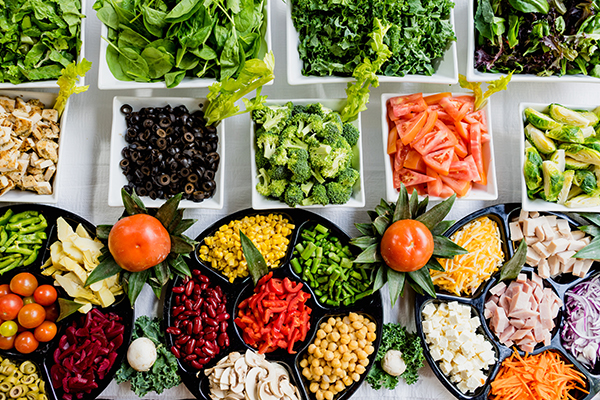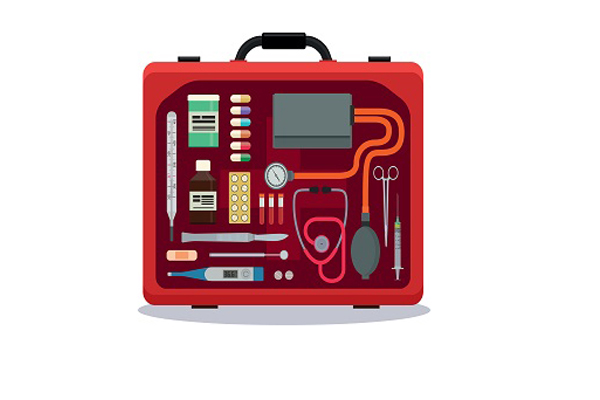Nutrition Corner: Meal planning
 Meal prep at home:
Meal prep at home:
Something fancy, something fun, something simple
Meal planning can sometimes be overwhelming, especially if you think you need elaborate plans for each night. One approach for the week ahead is to choose one item from each category below—something fancy, fun and simple—and buy enough for leftovers. You can build in meal variety over several weeks this way.
Still need convincing? See our Extra Meal Planning Tips below the 3 lists.
Something Fancy—Delicious, savory meals
- Broiled or baked salmon with mashed root vegetables or corn on the cob
- Barbecued or buffalo chicken with grilled or roasted veggies
- Chicken or Eggplant Parmesan
- Baked tofu or tempeh with a super-simple vegetable on the side (see “Simple” below)
- Lentil-walnut tacos
- Roasted chicken topped with fresh salsa
- Latkes with traditional potato or a mixture of sweet potato and zucchini
- Shrimp scampi
Something Fun—Easy-to-assemble, with a high “wow” factor
- Taco meat with peppers, cilantro and onion on corn tortillas. (Have extra tortillas? Make quesadillas or these fried egg breakfast tacos)
- Pizza toppings on store-bought cauliflower crust or flatbread, for fresh-from-the oven pizzazz
- Black bean salad with corn, peppers, onion and cilantro, spritzed in lime juice and olive oil
- A delicious peanut sauce on just about any stir-fry
- Chilled pasta or roasted squash salad with olive oil, chickpeas, chopped kale, peppers, mushrooms, artichokes and chunks of your favorite cheese
- Mason jar salads for on-the-go ease
- Sautéed or roasted carrots with oil, salt, pepper, cinnamon and maple syrup
Something Simple—Quick and easy for healthy fridge grazing
- Pair a ready-to-eat protein with a super-simple salad (ideas below), fresh or frozen veggies
- Store-bought cold chicken with a sauce for dipping and a summer salad
- Pre-cooked chicken sausages with condiments and frozen corn
- Simple open-faced tuna melt with pesto and fresh tomato
- Avocado toast topped with a hard-boiled egg or hummus, cucumber and arugula toast
- Fiesta shrimp grain bowl, with frozen or fresh shrimp
- A French apero dinatoire–style grazing table
- Super-simple salad ideas:
- Chopped tomato, avocado and onion dressed with store-bought pesto or simple olive oil and balsamic vinegar mixture
- Chopped nectarines or pears, bagged greens and goat cheese with store-bought vinaigrette
- Store-bought Goddess dressing for dipping with carrot sticks, cucumber spears or mini-peppers
- A store-bought salad kit
- Super-simple veggie ideas:
- Fresh asparagus or green beans sautéed for about 10 minutes in olive or sesame oil, and topped with lemon zest, parmesan cheese or balsamic glaze
- Precooked and packaged beets (or canned) with walnuts, parsley and goat cheese
- Snap peas or cucumber with dip
- Sautéed bok choy with spicy chili sauce
- Super-simple desserts
- Fresh berries with shaved dark chocolate
- Mocha chia seed pudding
- Banana boats
Still need convincing? Here are 6 Extra Meal Planning Tips:
- Build a list throughout the week for meal ideas and groceries to speed up both the planning and shopping steps.
- Look at what you have in the fridge and pantry and start from there. This can help eliminate food waste while also saving money!
- Don’t overburden yourself by cooking everything at once.
- Cook the fancy meal for Sunday night—with enough extras for 1-2 meals of leftovers.
- Cook the fun item either Monday night for variety or, if you’re ambitious, earlier on Sunday to get a jump on things.
- The simple ideas should be ready from the store with less than 5-10 minutes of prep. Extras stay on hand in the fridge for healthy eating whenever you’re in a pinch.
- Buy enough for extras in every category, to have options as you go through the rest of the week after cooking just a few times. Be cautious of overbuying however!
- Invest in extra storage containers to keep leftovers. Ones that stack well in the fridge are recommended, as well as glass for easier cleaning.
- Still don’t have time? Try using a grocery or meal delivery service. These cost more but can be a way to start meal planning with fewer steps.
- Keep a list of fancy, fun and simple successes to store for later use. This will come in handy when you draw a blank on the next meal to prepare, or when you are low on motivation to plan a full week of new meals.
Meal planning always takes a little extra time up front, but in the end, it can save you money, food waste, spontaneous meals bought outside the home and even calories if you focus on healthy meals. Try it out and make it work for your schedule and your family.
Happy eating!
Build a home health kit
 This winter, more than ever, preparation is key! Create a home health kit to get the most out of a phone or video visit with your doctor. With just a few items, you can check your vital signs. This important data helps your provider make good clinical decisions. We recommend these items—and extra batteries!
This winter, more than ever, preparation is key! Create a home health kit to get the most out of a phone or video visit with your doctor. With just a few items, you can check your vital signs. This important data helps your provider make good clinical decisions. We recommend these items—and extra batteries!
- Thermometer. Look for a digital model that goes in the mouth. These are more accurate than those placed on the skin. Be sure to read the directions.
- Oxygen saturation/pulse monitor. You can have alarmingly low oxygen saturation and not feel it! Slip your finger in this small device for a quick reading. This is a key evaluation tool for respiratory illnesses like COVID-19. (Also called a pulse oximeter.)
- Blood pressure cuff. Get a cuff for the upper arm. Look for an easy-to-read display. For an accurate reading, you must precisely follow all instructions.
- Scale. No fancy features needed: just one that can measure your weight.
Plus, a few essentials to help you feel better:
- Tylenol. Unlike ibuprofen or Aleve, Tylenol doesn’t cause GI upset or bleeding, and it’s OK for those 65+. Choose Extra Strength/500 mg. If you are allergic to Tylenol or have liver disease, talk with your provider before taking Tylenol.
- Nasal rinse. Irrigating the nasal passages helps to relieve congestion. You’ll need a neti pot or a special squeeze bottle, distilled water and a saline mix. Buy saline packets at drug stores, or make your own solution: 8 ounces of distilled water + 1/4 teaspoon non-iodized salt + 1/4 teaspoon baking soda. Distilled or boiled (and then cooled) tap water prevent infections that can occur with other sources of water. Rinse bottle/neti after each use with sterile water and air dry.
Don’t delay! Some items may be on back order.
7 Simple Tips to Get an Accurate Blood Pressure Reading
USE CORRECT CUFF SIZE
Cuff too small adds 2–10 mm Hg
PUT CUFF ON BARE ARM
Cuff over clothing adds 5–50 mm Hg
DON’T HAVE A CONVERSATION
Talking or active listening adds 10 mm Hg
EMPTY BLADDER FIRST
Full bladder adds 10 mm Hg
SUPPORT BACK/FEET
Unsupported back and feet adds 6 mm Hg
KEEP LEGS UNCROSSED
Crossed legs add 2–8 mm Hg
SUPPORT ARM AT HEART LEVEL
Unsupported arm adds 10 mm Hg
Getting the facts on tobacco and quitting
 Each type of tobacco product carries risks
Each type of tobacco product carries risks
Are some tobacco products less harmful than others? No, I don’t believe so. Each tobacco product carries its own health risks:
Smoking causes chronic bronchitis, emphysema/COPD and lung cancer. Snuffs, dips, chews and plugs cause head and neck cancers. Vaping causes life-threatening pneumonitis, an inflammation of the lung. All products with nicotine, including gums and patches, may lead to hypertension, heart attacks, strokes and peripheral arterial disease, including erectile dysfunction.
I also want to highlight that all smokers and vape users do poorly if they get COVID-19. They are much more likely to suffer serious complications or death than healthy, non-tobacco users.
The sooner a person quits tobacco use, the sooner they start moving to better health. Evidence suggests that once a person has stopped using tobacco products for 20 years, their risk of heart attack, stroke or cancer becomes equal to the risks of non-smokers.
Take a deep breath and see a new future.
Quitting smoking is very hard, and not restarting is even harder. The physical symptoms of withdrawal—like irritability, shortness of breath, headaches, anxiousness and fatigue—last only three to five days.
Most people can get through the withdrawal symptoms, but later start using tobacco again. So getting tobacco free can take several tries.
If someone is not even contemplating the idea of quitting tobacco products, obviously they won’t quit.
No one is going to wake up tomorrow and forget they dipped or smoked. So contemplating an attempt to quit is definitely the first step.
Make a plan to quit tobacco.
Set a quit date and prepare. Pick a date 7-10 days into the future. Get some sugar-free gum or hard candy as a replacement, to give your mouth something to do. Plan what you’ll do with the free time you have, now that you won’t be taking tobacco breaks. This is important! A smoke break is dedicated “me” time, and your brain will miss that break if you don’t fill it with a satisfying replacement activity.
See your primary care doctor for help. Your doctor can talk with you about various tools and resources. Pharmaceutical products designed to help people quit tobacco use may not work for everyone, but they do help many people.
Enroll in a tobacco-cessation program. Studies on two medications—Chantix (varenicline) and Zyban (bupropion)—show that people are much more likely to succeed if the medications are used in conjunction with an education program. The classes provide important information, and a treatment plan can be customized to you. They also serve as reinforcement. Making time to participate in a class and joining a group requires commitment. This helps you stay committed to your tobacco-cessation efforts.
If you are contemplating a tobacco-free phase of your life, make an appointment to see your doctor. At PacMed, we offer virtual and in-person appointments.
Back to Basics: Getting your child’s health back on track
 It’s understandable this year if your child has gotten behind on immunizations or other care. As a primary care provider, my advice to parents is to start catching up sooner rather than later! Ongoing delay can cause new concerns.
It’s understandable this year if your child has gotten behind on immunizations or other care. As a primary care provider, my advice to parents is to start catching up sooner rather than later! Ongoing delay can cause new concerns.
Can we wait on vaccines? Maybe do them later?
As a rule of thumb, the longer you delay immunizations, the greater the risk to your child and others for infection of preventable diseases. Immunizations (also called vaccinations) protect your child and help keep preventable diseases from spreading. Babies and toddlers can be at higher risk of complications. And while babies get helpful antibodies during breastfeeding, this protection wears off over time. This is why we begin protecting children at an early age with vaccines.
Children who get their immunizations on time get earlier protection for these conditions. This is important as they begin interacting with more people. Childhood immunizations and visits are carefully timed to help your child stay healthy.
Your child’s doctor can look at any missed immunizations or well-child visits, and help you get back on track. We will work with you to create a personalized schedule for your family. To keep your child’s risks low, we want to start this process right away! Remember to get flu shots for your family this year—aim to have this done by Halloween.
Is visiting the clinic safe?
We know your healthcare needs are important, even in the middle of a pandemic. PacMed is fully committed to your family’s health and safety. We screen every visitor for COVID-19 symptoms; anyone with symptoms will be moved away from waiting areas for testing. Patients are also screened for symptoms before scheduling appointments. Wearing a mask is required in our clinics. We are offering virtual visits, so you’ll find there are fewer people in the clinics. We also have spaced out appointments to allow for social distancing and rigorous cleaning procedures.
Well-child visits help your child’s primary care provider stay on top of their health and development. Your child’s provider can make a personalized recommendation on how to proceed with routine visits, needed screenings or immunizations. For children 2 and under, we likely will need the child to come in for an in-person visit, but call your primary care provider first to see what is recommended.
When is a virtual visit the right choice?
If you need lab work or a vaccination, then you’ll need to come in. Of course, an injury such as a broken bone needs to be taken care of in person. With other health issues, a good first step is to call your provider’s office and ask if a virtual visit is an option for you.
At PacMed, you can communicate with your care team in MyChart, but if your need is urgent, pick up the phone. We will help you choose the right kind of visit and, if that’s a virtual visit, we’ll make sure you know how to use Zoom to meet us online. If you bring a child in for an appointment, only one parent or guardian may accompany them, due to COVID-19 precautions.
Any tips on how I can help my child feel comfortable and safe?
This is a hard time for most everyone, and especially children who may not fully grasp all that’s going on. It can be helpful to explain to your child several times, and in different ways, the importance of social distancing and handwashing. Leading by example is also very important. For example, when you are washing hands, have your children do the same—and sing a song together to make sure you scrub for 20 seconds.
Also be sure to talk with your child about why we wear a mask, and demonstrate how to do it. The mask should go over the nose and under the chin. Finding a fun print, a comfortable fabric or a good fit for the child can help make this a better experience.
Everyone can work together to keep our community healthy during this time. Thank you for doing your part. At PacMed, our primary care team is here for you.






